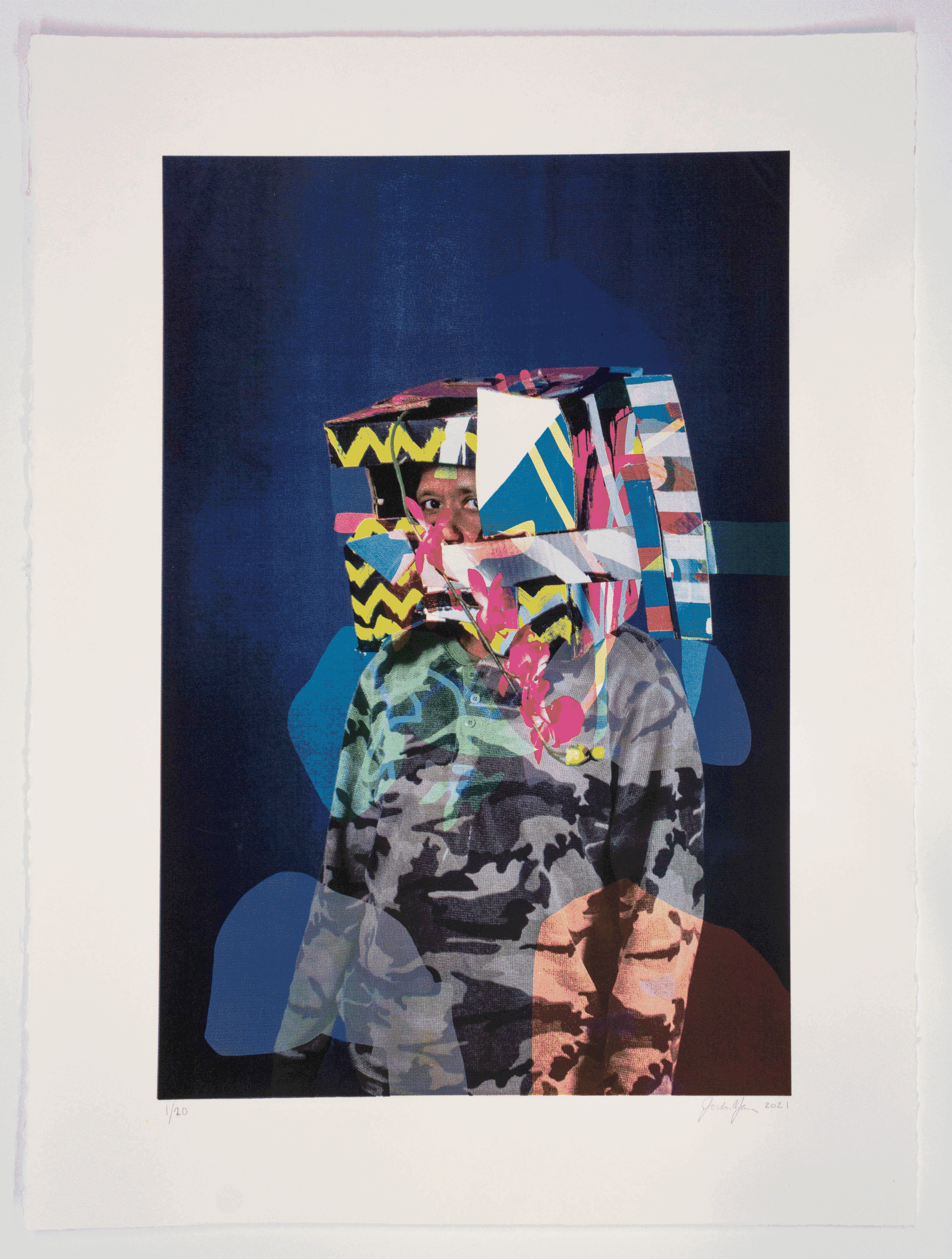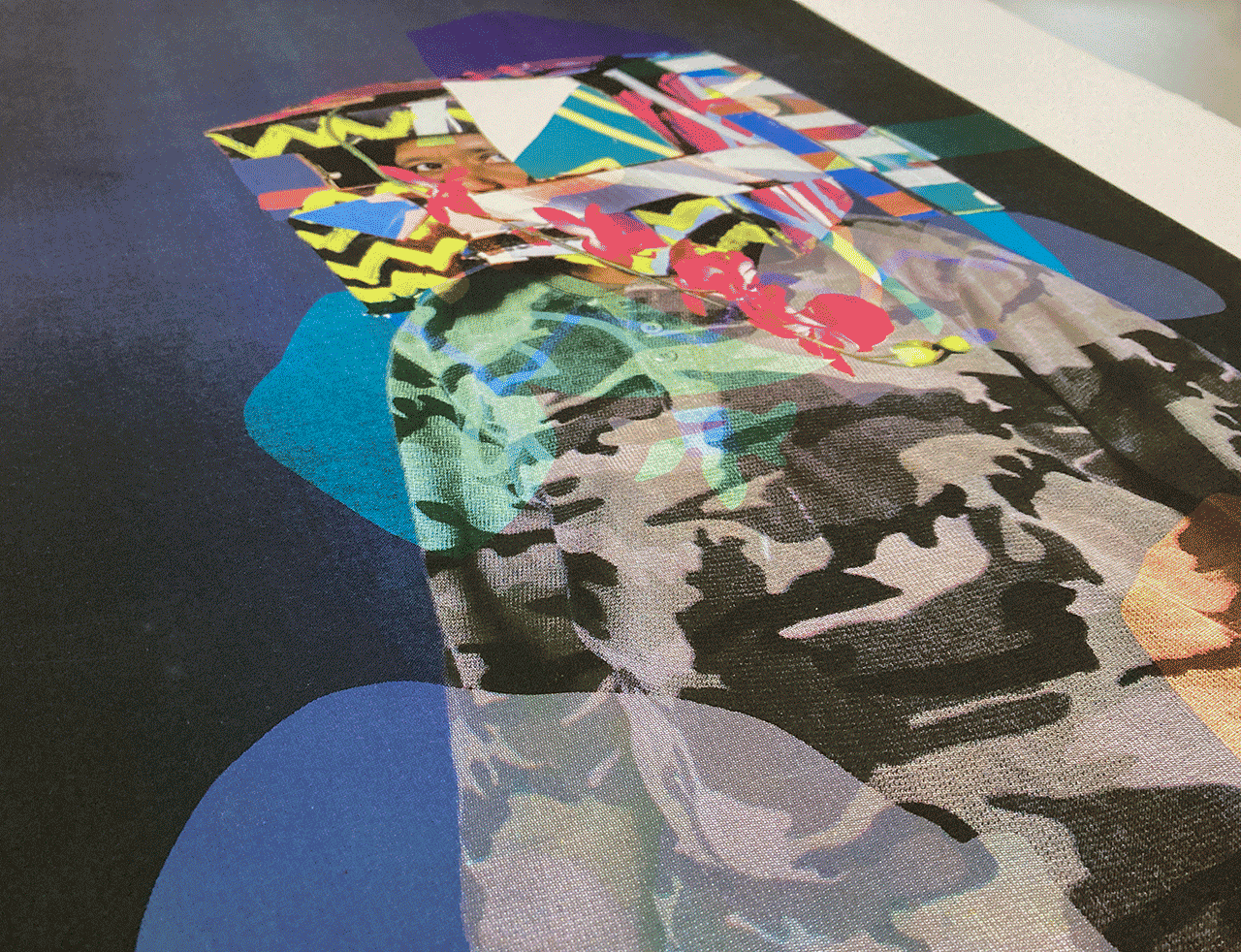I’ve been working with Spudnik Press this past year on a series of three print editions, and the first is completed and available for pre sale until the end of the month. The full set of three will be exhibited at Spudnik’s booth at EXPO Chicago this April.
These images stem from my work in the WARP residency at The Weaving Mill in Chicago in 2017, where I carried out a series of collaborative mask making workshops with clients from Envision Unlimited, which houses The Weaving Mill and it’s program. My practice has for years delved into camouflage, concealment, conspicuous visual signaling, distortion, collage and related concepts and processes that all hinge on a playing with figure and ground. Over the course of the month I worked with Envision’s community members to paint cardboard, manipulate different scavenged materials and play with forms until we had a set of structures that could somehow function as masks–usually in the form of a manipulated and adorned cardboard box placed over one’s head. At the end of the process I created an ad hoc photo studio and shot a set of images of my collaborators wearing their favorite masks. I then used these images as source material for various projects, usually distorting and fragmenting the images further, but refrained from showing the portraits themselves as printed photographs.
My resistance to showing these portraits directly as photographic images eventually led me to look for other ways of printing them, and the CMYK screen printing process proved the perfect option: they are both shockingly “photographic” (thanks to the adept printing of Angee Lennard) and visually coy, summoning the presence of the masked subjects through another layer of distortion, translation, and play. The images themselves both reveal and conceal a subject behind the mask, and something about the printing process seems to mimic that visual dance.
Envision’s mission is to “provide persons with disabilities or special needs quality services that promote choice, independence and inclusion”. I wanted to approach the workshop with their clients in an open way that allowed them to dip in and out of the process as they wanted. Rather than each collaborator making their own mask, every step of the process was an aleatory group effort, circulating materials and gestures around the tables we worked at, slowly accruing and distilling raw materials into strange structures that reflected all of our gestures and whims. As portraits, I set the intention of not having any prescribed meaning of what it means for my collaborators with disabilities or special needs to be wearing these masks, trying instead to let them simply be a record of our process together.

